The savings offers that appear on this site are from companies from which MoneyCrashers.com receives compensation. This compensation may impact how and where products appear on this site (including, for example, the order in which they appear). MoneyCrashers.com does not include all savings companies or all savings offers available in the marketplace.
Right now, the U.S. national average interest rate on savings account balances is nowhere near enough to keep pace with inflation.
The good news is you can do better — a lot better — with one of these high-yield savings accounts.
Best High-Yield Savings Accounts
We evaluated dozens of online banks, traditional banks, and credit unions to find the best high-yield savings accounts available right now.
All of these accounts yield multiple times the national savings account average. They can help build your emergency savings fund faster and fight back against inflation. And all are FDIC insured up to the current limit per account ($250,000).
Upgrade Premier Savings
Upgrade Premier Savings offers one of the best savings yields on the market (4.56% APY). You can get a bunch of other deposit accounts and credit products at Upgrade too.
Minimum Balance
$1,000 (to earn interest)
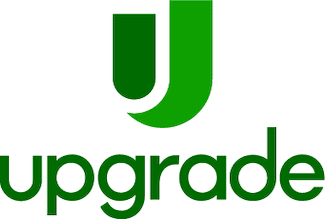
Apply Now
Alliant High-Rate Savings
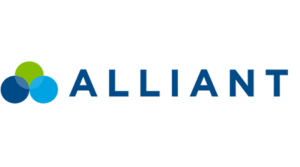
The Alliant High-Rate Savings Account has a fine yield (currently 3.10% APY¹), but the real value lies in its savings subaccounts — up to 19 for specific savings goals.
Monthly Fee
$0 with e-statements

Apply Now
GO2Bank
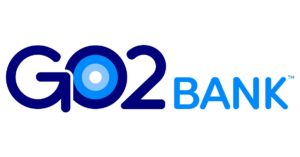
Earn up to 7% cash back on in-app e-gift cards, 3% on Amazon cards, and 4.50% APY on savings balances up to $5,000.
Savings APY
Up to 4.50% APY
Monthly Fee
$0 with direct deposit ($5 otherwise)
Maximum Balance
$5,000 to earn interest

Apply NowRead the Review
CIT Bank Platinum Savings

Platinum Savings offers the highest yield of any CIT Bank savings account, which is saying something. Keep $5,000 or more in the account to earn 4.75% APY on your entire balance.
Savings APY
Up to 4.75% APY

Apply NowRead the Review
Marcus Online Savings Account

Marcus Online Savings yields 3.90% APY on all balances with no fees, minimums, or other requirements to earn interest.

Capital One 360 Performance Savings
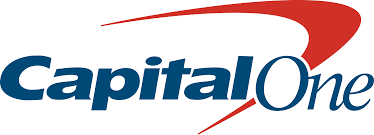
Capital One Performance Savings is a mobile-friendly savings account that currently yields 3.50% APY on all balances. It complements a full lineup of other Capital One deposit accounts and credit products.

Read the Review
Discover Bank Online Savings
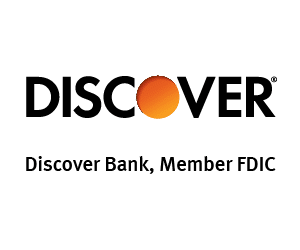
Discover Bank’s Online Savings Account earns 3.75% APY on all balances. It also has one of the best new account promotions of any U.S. savings account — up to $200 with qualifying deposits.
Savings APY Effective
April 13, 2023

Apply NowRead the Review
Citi® Accelerate Savings

Citi Accelerate Savings earns up to 3.85% APY on all balances, though you need at least $500 in the account to avoid the monthly maintenance fee.
Savings Yield
Up to 3.85% APY
Monthly Fee
$4.50, waived with $500 balance

Methodology: How We Select the Best High-Yield Savings Accounts
We evaluate high-yield savings accounts on several key metrics that can make or break your experience as an account holder. For each metric, we select the account that surpasses all other competitors — giving you the confidence you need to choose the product that works best for you.
High Yield (High APY)
“What’s the interest rate?” is probably the first question you ask yourself when evaluating a savings account. A higher interest rate, or yield, means your money grows faster. When inflation runs hot, yield is your best defense against falling buying power.
Low Fees
Account fees are your enemy. The best high-yield savings accounts charge no monthly maintenance or minimum balance fees or have a way to get out of them. They should have low or no overdraft fees and no fees for person-to-person transfers.
Account Opening Bonus
It’s harder to find new account opening bonuses on savings accounts than checking accounts, but they’re around if you know where to look. See our list of the best new bank account promotions for our top picks right now.
Checking & Savings Combo
Many banks offer checking and savings accounts under the same roof, but only a few do both well. Several of these standouts appear on this list. For example, the Aspiration Spend & Save Account, promises a category-leading yield and up to 10% cash back on select checking purchases.
Other Account Types Available
Some banks and financial technology apps offer savings accounts only, or checking and savings accounts only. That’s fine, but all else being equal, we prefer those that have a wider range of account types, including checking accounts, money market accounts, and CDs.
Savings Automation
You have enough to worry about. Choose a bank that saves more of what you earn without waiting for your say-so. That might mean rounding up the change on debit card purchases, automatically setting aside a portion of each paycheck, using an algorithm to figure out how much you can safely save each week — or all of the above.
Mobile Experience
Your bank’s mobile app should do everything its desktop banking portal does: accept mobile check deposits, execute (free) P2P funds transfers, pay your bills, manage your savings plan, and more. And it should look good on a small screen.
Become a Savings Account Expert: Your HYSA Questions Answered
High-yield savings accounts operate just like their yield-less siblings, but you make money on them. And if you’re like most people, you probably have some questions about that.
How Do High-Yield Savings Accounts Calculate Interest, & What Is Compounding?
Your savings account’s yield — how much its balance grows each year — is a function of its interest rate and compounding frequency.
You already know that a higher interest rate means faster growth. But what role does compounding frequency play?
Think of compounding as earning interest on interest. Compounding frequency describes how often your account adds the interest it’s earned to the original (principal) balance. The higher the compounding frequency, the longer each extra bit of interest has to earn interest on itself.
Don’t get too excited. In percentage terms, compounding frequency has a negligible impact on growth. And when interest rates are near zero, “negligible” is too generous. You have to squint to see the difference.
For example, imagine two seemingly identical savings accounts. Both earn 0.50% interest. The only difference: Account A compounds annually and Account B compounds daily.
You seed both accounts with $10,000 and make no further deposits. The interest rate remains level at 0.50%. By Year 10, how much bigger is Account B’s balance?
| Account A | Account B | |
| Year 1 | $10,050.00 | $10,050.12 |
| Year 2 | $10,100.25 | $10,100.50 |
| Year 5 | $10,252.51 | $10,253.15 |
| Year 10 | $10,511.40 | $10,512.71 |
A whopping $1.31, that’s how much. After accounting for inflation, the difference is even smaller.
Can You Lose Funds Held in a High-Yield Savings Account?
Federal deposit insurance (FDIC coverage) protects savings balances held with member FDIC institutions up to at least $250,000. That protection kicks in if the member bank fails.
Always, always, always ensure your bank is FDIC-insured. Otherwise, there’s no guarantee you’ll get your money back if it closes its doors.
FDIC insurance doesn’t cover everything that can go wrong at your bank. It might not reimburse you if your account is hacked and drained without your consent or if you fall victim to a financial scam.
Do Banks Still Charge Excess Withdrawal Fees for High-Yield Savings Accounts?
Some banks continue to charge excess withdrawal fees. But a growing number of financial institutions — including several on this list — now choose to waive them.
That’s because of a long-overdue change to a Federal Reserve bylaw known as Regulation D (Reg D). For years, Reg D limited withdrawals or payments from savings and money market accounts to six per statement period. Banks and credit unions imposed steep fees for withdrawals in excess of this limit — often $10 or more per occurrence. Repeat offenders risked account closure.
In April 2020, the Federal Reserve announced that deposit institutions were no longer bound by the strict monthly withdrawal limit. But it didn’t require banks to make the change, so some still have excess withdrawal fees on their books.
Final Word
Choosing a high-yield savings account can feel overwhelming, so take a step back before you make your pick and consider which factors matter most to you.
Often, the decision process begins and ends with yield. If that’s the case for you, choose the highest-yielding savings account you can find.
If you have priorities other than maximizing your interest earnings, use our Methodology section as a guide. Look for accounts with low (and ideally no) fees, an above-average mobile experience that includes features like mobile check deposit, and other account types available from the same institution.
Try not to overthink it. Opening a savings account isn’t something to be done lightly, but it’s also not as big a deal as buying a car or house. You can always open another one if you decide your first choice wasn’t the right one.
Editorial Disclosure: This content is not provided or commissioned by the bank advertiser. Opinions expressed here are the author’s alone, not those of the bank advertiser, and have not been reviewed, approved, or otherwise endorsed by the bank advertiser. This site may be compensated through the bank advertiser Affiliate Program.
Credit: Source link









































